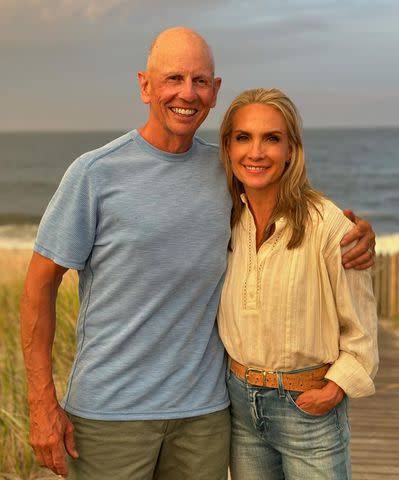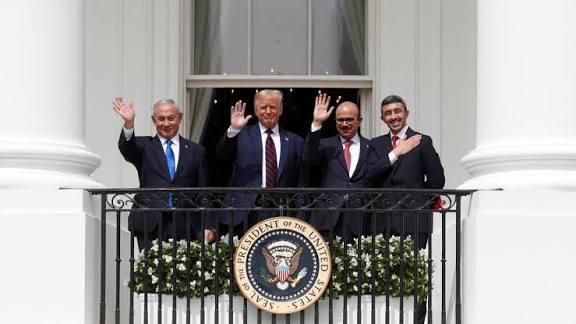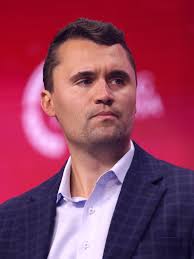Margaret Thatcher died: Cause of death,Book,Thatcher known as the Iron Lady
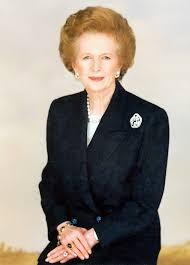
Death of Margaret Thatcher: Cause of death, book, Thatcher known as the Iron Lady. Today we will discuss about Margaret Thatcher died: Cause of death,Book,Thatcher known as the Iron Lady
Margaret Thatcher died: Cause of death,Book,Thatcher known as the Iron Lady
Margaret Hilda Thatcher, born on 13 October 1925 in Grantham, Lincolnshire, remains one of the most influential and controversial figures in modern British history. Known around the world as the “Iron Lady,” she was the first woman to become Prime Minister of the United Kingdom and served from 1979 to 1990. Her leadership reshaped Britain’s political, economic, and cultural landscape, and her impact continues to be debated long after her death in 2013.
This article explores how Margaret Thatcher died, the causes of her death, the books that document her life and legacy, and the origin and meaning of the “Iron Lady” nickname.
Early Life and Rise to Power
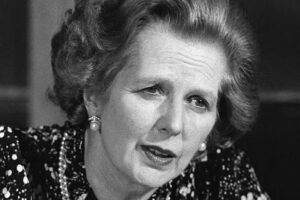
Margaret Thatcher was born Margaret Hilda Roberts, the daughter of Alfred Roberts, a grocer and local politician, and Beatrice Roberts. Growing up above her father’s grocery shop in Grantham, she developed a strong work ethic, moral discipline, and belief in self-reliance — principles that would later define her political outlook.
She studied chemistry at Somerville College, Oxford, where she became active in conservative student politics. After graduating, she worked briefly as a research chemist before training as a barrister. In 1951, she married Denis Thatcher, a successful businessman who supported her political ambitions.
In 1959, Thatcher entered Parliament as the Conservative MP for Finchley. Over the next decade and a half, she built a reputation as a diligent and principled politician. Her intelligence, determination, and strong communication skills set her apart in a male-dominated political environment.
In 1970, under Prime Minister Edward Heath, she was appointed Secretary of State for Education and Science. It was during this time that she earned both praise and criticism for cutting free milk programs in schools — an early example of the tough decisions that would define her leadership.
By 1975, she had challenged and defeated Edward Heath to become leader of the Conservative Party, positioning herself as a new kind of leader ready to reverse what she viewed as Britain’s decline.
Prime Minister and the “Iron Lady” Era
When Thatcher became Prime Minister in May 1979, Britain was facing deep economic trouble — high inflation, widespread strikes, and declining global influence. Her response was radical and uncompromising. She implemented monetarist economic policies, prioritized reducing inflation, and curbed the power of trade unions.
Her policies led to short-term hardship — unemployment rose sharply — but she believed economic stability and free-market principles would revive Britain’s competitiveness. Over time, she privatized major industries such as British Telecom, British Gas, and British Airways, reshaping the UK economy toward privatization and individual enterprise.
Internationally, she forged a powerful alliance with U.S. President Ronald Reagan, united by their shared anti-communist stance. Her leadership during the Falklands War in 1982, when British forces successfully reclaimed the Falkland Islands from Argentina, bolstered her image as a strong and decisive leader.
It was during this period that the world began calling her the “Iron Lady” — a nickname that originated from a Soviet newspaper. Intended as an insult, it described her as inflexible and confrontational toward the Soviet Union. Rather than rejecting the label, Thatcher embraced it proudly, declaring that she indeed possessed “a heart of steel.” From then on, the “Iron Lady” became her defining persona — symbolizing strength, resilience, and determination.
The Fall from Power and Later Life
Thatcher won three consecutive general elections — 1979, 1983, and 1987 — becoming one of the longest-serving British prime ministers of the 20th century. However, her later years in office were marked by controversy.
Her decision to introduce the Community Charge (popularly known as the “poll tax”) sparked widespread protests across the country. Members of her own party began to question her leadership style, which many saw as increasingly autocratic and detached. In November 1990, after a leadership challenge within her party, she resigned as Prime Minister.
Though she stepped down from office, she remained an influential political figure. In the years that followed, Thatcher gave speeches, wrote books, and continued to shape the global debate on economics, leadership, and the role of government.
Health Decline and Cause of Death
Declining Health
In her later years, Margaret Thatcher’s health began to deteriorate. Beginning in the early 2000s, she suffered a series of small strokes, leading doctors to advise her to reduce public speaking and appearances. Around the same time, her close friends and family noticed early signs of dementia, which gradually worsened over the next decade.
Despite her frail health, she remained mentally sharp in private moments and continued to correspond with political allies and admirers.
In December 2012, she moved into a private suite at The Ritz Hotel in London, where she received round-the-clock care. It was there that she spent her final months.
The Day She Died
On 8 April 2013, Margaret Thatcher died peacefully at the age of 87, following a stroke. The official cause of death was listed as a cerebrovascular accident (a severe stroke), with secondary causes including repeated transient ischaemic attacks (mini-strokes), bladder cancer, and dementia.
Her family — including her children, Mark and Carol Thatcher — announced the news, saying that she had passed away peacefully.
Funeral and Public Reaction
Margaret Thatcher’s funeral took place on 17 April 2013 at St Paul’s Cathedral in London. It was a ceremonial funeral with full military honors, attended by Queen Elizabeth II and dignitaries from around the world.
The service reflected her long-standing wishes: traditional hymns, scripture readings, and an emphasis on her Christian faith and patriotism. After the service, her body was cremated at Mortlake Crematorium, and later that year, her ashes were interred beside her husband Denis at the Royal Hospital Chelsea.
Public reaction to her death was deeply divided — much like her political career. Many mourned her passing, praising her courage, leadership, and role in transforming Britain. Others expressed anger or even celebration, particularly in former industrial regions that had suffered economic decline under her policies. The contrast highlighted how deeply Thatcher had reshaped, and divided, British society.
Books About Margaret Thatcher
Few 20th-century leaders have inspired as many books, biographies, and analyses as Margaret Thatcher. Her life, political philosophy, and leadership style have been documented from every perspective — sympathetic, critical, and scholarly.
Autobiographies by Margaret Thatcher
-
The Downing Street Years (1993)
This is Thatcher’s own account of her time as Prime Minister, providing firsthand insights into key decisions such as the Falklands War, the miners’ strike, and her relationship with Ronald Reagan. -
The Path to Power (1995)
This memoir explores her early life, education, and political rise, offering a personal view of how her childhood values shaped her leadership philosophy. -
Statecraft: Strategies for a Changing World (2002)
A reflective work that discusses global politics, leadership, and the changing international order. It highlights her enduring belief in strength, conviction, and sovereignty.
Together, these three books form a powerful narrative of her life and legacy in her own words.
Major Biographies
-
Margaret Thatcher: The Authorized Biography by Charles Moore
Written with access to Thatcher’s private papers and family cooperation, this multi-volume work is considered the definitive account of her life. It covers her early years, political career, and later life in remarkable depth. -
Margaret Thatcher: The Grocer’s Daughter and The Iron Lady by John Campbell
These books provide a detailed and balanced exploration of her character, achievements, and controversies, examining both her strengths and flaws. -
Not for Turning by Robin Harris
Written by one of Thatcher’s speechwriters and close allies, this biography offers a personal portrayal of her leadership and personality.
Other Influential Works
-
Margaret Thatcher: Power and Personality by Jonathan Aitken — A study of her leadership style and emotional character.
-
The Assassination of Margaret Thatcher by Hilary Mantel — A fictional collection reflecting on how Thatcher’s image shaped cultural and political imagination.
-
The Iron Lady: Margaret Thatcher, from Grocer’s Daughter to Prime Minister by John Campbell — A one-volume condensed version of his earlier two-part biography.
These books collectively reveal the complexity of Thatcher’s legacy — a woman of fierce intellect, political conviction, and emotional resilience.
The Meaning of the “Iron Lady”
Origin of the Nickname
In January 1976, while still leader of the Opposition, Margaret Thatcher delivered a speech criticizing the Soviet Union’s expansionist policies. In response, a Soviet journalist labeled her “The Iron Lady” in an article intended as an insult.
Instead of rejecting the term, Thatcher adopted it proudly. She recognized that the phrase captured her firm stance, not only toward the Soviet Union but also toward any political or ideological opposition. From then on, “The Iron Lady” became her emblem.
What the Nickname Represented
-
Strength and Determination – She refused to back down from principles or compromise under pressure.
-
Uncompromising Leadership – Her decisions were often controversial but guided by conviction rather than popularity.
-
Defiance – The title symbolized her defiance against the establishment, critics, and the male-dominated political world.
-
Patriotism and Resolve – Particularly during the Falklands War, her determination reflected a steel-like commitment to Britain’s sovereignty.
The nickname also reflected her communication style — sharp, articulate, and unwavering — characteristics that commanded respect even among her political adversaries.
Criticism of the “Iron Lady” Image
While the nickname became a symbol of power, critics argued that it reduced her complexity to a single dimension. The term suggested emotional coldness and rigidity, overshadowing her empathy, humor, and private warmth. Some feminists viewed the label as reinforcing stereotypes about women needing to appear “masculine” to succeed in politics.
Nevertheless, the “Iron Lady” remains one of the most enduring political monikers in modern history, encapsulating both admiration and controversy.
Legacy and Lasting Influence
Margaret Thatcher’s impact extends far beyond her death. She fundamentally altered Britain’s political and economic direction and reshaped global conservatism.
Her supporters credit her with reviving the British economy, strengthening national pride, and ending the era of decline. They argue she empowered individuals, curbed union excesses, and restored international respect.
Critics, however, accuse her of deepening social inequality, destroying industrial communities, and prioritizing markets over people. Her economic reforms, they say, favored the wealthy and eroded the social fabric of working-class Britain.
Even decades later, British politics remains defined by her influence. Every prime minister since — Conservative or Labour — has had to engage with the legacy of Thatcherism, whether to embrace or reject it.
Globally, her partnership with Ronald Reagan helped shape the end of the Cold War and the rise of neoliberal economics. Her emphasis on free markets, small government, and national sovereignty influenced leaders from Europe to Asia.
Culturally, she has inspired countless films, books, and debates. Meryl Streep’s portrayal of her in the 2011 film The Iron Lady introduced Thatcher’s story to new generations and reignited conversations about her legacy.
Conclusion
Margaret Thatcher’s death on 8 April 2013 marked the end of an extraordinary life — one defined by conviction, resilience, and controversy. Her passing was the closing chapter of a leader who changed Britain’s political and economic identity forever.
She died peacefully at age 87 after suffering a stroke, following years of declining health caused by mini-strokes, dementia, and cancer. Her funeral at St Paul’s Cathedral symbolized both respect for her achievements and acknowledgment of the divisions she left behind.
Books, biographies, and films continue to explore the many sides of her complex personality — from the grocer’s daughter who rose to power, to the unyielding “Iron Lady” who defied both enemies and expectations.
Whether viewed as a hero or a villain, Thatcher remains a towering figure in 20th-century history. Her strength, leadership, and ideological clarity left an indelible mark on Britain and the world — one that continues to shape political discourse long after her death.
How useful was this post?
Click on a star to rate it!
Average rating 0 / 5. Vote count: 0
No votes so far! Be the first to rate this post.
About the Author
usa5911.com
Administrator
Hi, I’m Gurdeep Singh, a professional content writer from India with over 3 years of experience in the field. I specialize in covering U.S. politics, delivering timely and engaging content tailored specifically for an American audience. Along with my dedicated team, we track and report on all the latest political trends, news, and in-depth analysis shaping the United States today. Our goal is to provide clear, factual, and compelling content that keeps readers informed and engaged with the ever-changing political landscape.
